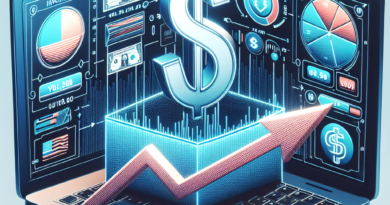Stock market at risk of reversal for these 3 reasons
Stock market at risk of reversal for these 3 reasons.
2024 opens with questions about the stock market, after the exceptional results of 2023 driven by the artificial intelligence boom and hopes of an end to rate rises.
The S&P 500 index rallied by 24%, the Nasdaq Composite recorded an exceptional +43.4%, the best since 2020.
However, the enthusiasm could be dampened by uncertainties related to Federal Reserve policies and unknowns economical, but not only.
Looking at the graph of the benchmark index, investors ask themselves whether it is the right time to make profits, considering the indications of experts and analysts in the sector.
1) Conference Board's Leading Economic Index at lowest since May 2020 The Conference Board's latest Leading Economic Index (LEI) fell for the 20th consecutive month in November, signaling an impending slowdown in economic activity.
The index fell 0.5% compared to the previous month, reaching its lowest value since May 2020, standing at 103 points.
To better understand the correlation between the LEI and recessions, the next chart shows the percentage of decline from the index's previous peak.
We are currently 12.6% below the 2021 peak.
Additionally, the chart highlights the number of months that passed between the previous peak and the start of recessions, averaging 10.6 months.
We are currently 23 months past the peak of 2021.
After a 2023 characterized by the success of a few companies in the S&P 500, experts recommend a partial cash-out strategy to mitigate risk.
Some say that rebalancing exposure, for example maintaining exposure to the Nasdaq 100, may be sufficient.
Citi expects the market's positive performance to continue into 2024, although last year's best-performing sectors may experience some significant setbacks or pauses.
The investment bank also considers the possibility of a double-digit return for the US stock market.
Wells Fargo Investment recommends reducing some exposure to stocks at this time, suggesting a rebalancing of the stock portfolio and a rotation into fixed income.
“We are still near all-time highs, which makes this a good time to make cuts.” On stocks, it will be essential to be very selective, and the drop in rates could favor technology stocks and high-dividend stocks.
2) Inversion of the yield curve The risk of recession increases in the United States, where increases in short-term rates by the Federal Reserve have led to an inversion of the yield curve.
Typically, the longer the maturity of the long-term government bond, the higher its yield.
This could herald a possible serious recession in 2024.
Currently, there is an ongoing reversal in 2- and 10-year Treasury yields, where 2-year bonds offer higher yields than 10-year bonds.
This phenomenon has long been considered a reliable predictor of impending recessions, and signs of a reversal could indicate a coming economic recession.
“An inversion of the curve is a clear sign of recession.
I believe the dollar will face significant challenges in the next recession because of the policies we will adopt to address what could prove to be a very painful recession,” noted Jeffrey Gundlach, CEO of DoubleLine Capital.
According to the fixed income expert, the 2- and 10-year Treasury yield curve has remained inverted for 79 weeks, approaching the 89-week record set during the Carter administration in 1979.
This poses a serious danger for the stock market.
read also 3 stocks to have in your portfolio in 2024 3) Double top on the S&P 500 chart The S&P 500 index has almost returned to the record level set in January 2022, forming a "double top" figure of around 4,816 points on the price chart .
Characteristic of the double top is to provide indications on a target that prices can reach upon completion of the figure and which is proportional to the width of the figure itself.
In the case of the S&P 500 this pattern would be completed upon violation of the 3,491 area, approximately 26% away from current values.
But the test of this area would be enough to push US stocks into a bear market.
Investors face a crucial decision: cash out now or take a phased approach? Some analysts, including experts at Wells Fargo, suggest an immediate rebalancing or gradual reduction of exposure to the shares, given the proximity to all-time highs.
DISCLAIMER The information and considerations contained in this article should not be used as the sole or primary support on which to make investment decisions.
The reader maintains full freedom in his own investment choices and full responsibility in making them, since he alone knows his risk propensity and his time horizon.
The information contained in the article is provided for informational purposes only and its disclosure does not constitute and should not be considered an offer or solicitation to public savings.




